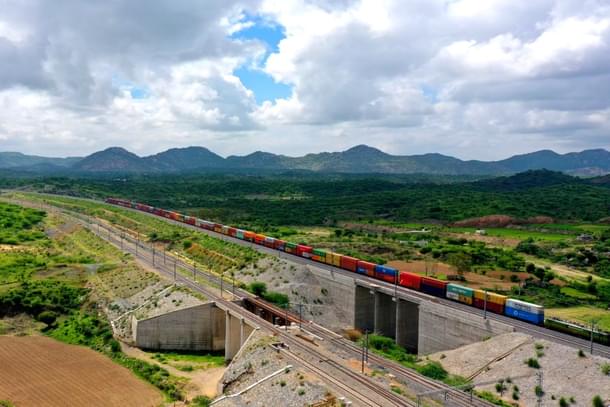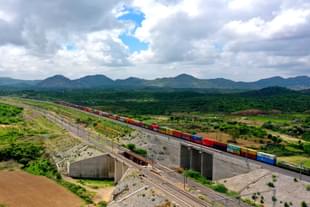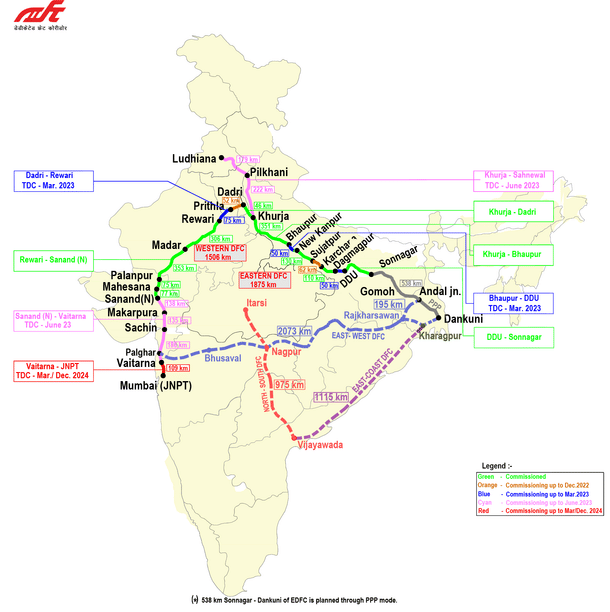Infrastructure
Dedicated Freight Corridors Can Add Rs 16,000 Crore To India's GDP: Study
V Bhagya Subhashini
Oct 25, 2024, 03:29 PM | Updated Nov 01, 2024, 08:58 PM IST
Save & read from anywhere!
Bookmark stories for easy access on any device or the Swarajya app.


In a recent study conducted by the University of New South Wales (UNSW) in Australia, India’s Dedicated Freight Corridors (DFCs) are projected to boost the country’s GDP by Rs 16,000 crore.
The findings, shared by the Dedicated Freight Corridor Corporation of India Limited (DFCCIL), highlight the transformative economic impact of the corridors, particularly the Western Dedicated Freight Corridor (WDFC).
The operationalisation of the WDFC has significantly reduced freight costs and travel times, leading to commodity price reductions of up to 0.5 per cent, DFCCIL reported.
Furthermore, the study indicates that DFCs have contributed to 2.94 per cent of the revenue growth achieved by Indian Railways between the fiscal years 2018–19 and 2022–23, with over 10 per cent of India’s rail freight now managed through DFC routes.
The DFC network, spanning 2,843 kilometers and passing through 56 districts across seven states, is nearing completion at 96.4 per cent as of October 2024.
The Eastern DFC (EDFC), stretching 1,337 kilometers from Ludhiana to Sonnagar, is fully operational, while the WDFC, covering 1,506 kilometers from Dadri to Mumbai, is 93.2 per cent complete.
These corridors connect key industrial hubs, including coal mines, thermal power plants, cement factories, and large ports such as Mundra, Kandla, Pipavav, and Hazira.

Trains utilising these dedicated tracks have demonstrated impressive average speeds ranging from 50 to 60 km per hour, with the potential for further acceleration up to 100 km per hour. This marks a significant improvement compared to the average speeds of goods trains on conventional tracks, which typically range from 20 to 25 km per hour.
In addition to economic growth, the study highlights the DFC’s “Social-Equalising Effect,” noting that regions with lower per-capita GDPs experienced significant economic advantages. The benefits have been most pronounced in the western regions closest to the WDFC, with regions further away also experiencing positive economic impacts due to reduced transportation costs, reports Economic Times.
Currently, an average of 325 trains operate daily on the DFCs—an increase of 60 per cent from last year—underscoring the corridors' rising importance in India’s logistics and supply chain infrastructure.
V Bhagya Subhashini is a staff writer at Swarajya. She tracks infrastructure developments.





